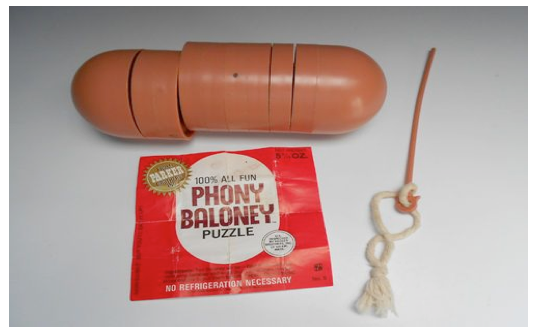CommentsPLATKIN ON PLANNING--When investors decide to plunk their own money -- or more likely someone else’s money – into high-rise buildings, usually with luxury apartments or condos, their motivation is to turn a handsome profit.
Despite their public persona, their investment decisions have nothing to do with self-serving claims about LA’s housing crisis, demographic trends, transit use, or land use policies promoting Transit Oriented Development.
Developers invoke these arguments, especially proximity to transit, when they happen to coincide with their projects. This is why the same high-rise, luxury buildings shoot up in many neighborhoods where the only transit service is a bus line. Examples of these luxury buildings can be found in many LA areas, such as Warner Center and Century City, where the entire built environment is based on cars.
In fact, in Century City a new 40-story luxury high-rise apartment building is soon opening, and it will be totally oriented toward automobile driving. It not only caters to the tiny percent of tenants who can afford its lavish apartments, but its full range of tenant services conspicuously includes on-call chauffeurs for its fleet of luxury cars. In addition to these and related amenities, it also offers Mayor Garcetti an opportunity to include its 283 rental units in his construction goal of 100,000 desperately needed new residential units in Los Angeles.
For a precedent, the same LA Times article examines a new San Vicente Boulevard apartment building on the border of Beverly Hills and Los Angeles – not far from Century City. Already open, it offers concierge service for all possible needs, consciously mimicking the services provided by a five star hotel, including attendant parking and fully stocked pantries in each unit. If this luxury life style appeals you, be prepared to dig deep into your pockets. The typical apartment rents for $12,000 per month, and a penthouse unit is slightly pricier: $40,000 per month.
To put this rent structure into perspective, once LA’s minimum wage reaches $15/hour and if you devoted half of your salary to rent, you would need at least 13 full time jobs to sign a lease for the basic units. The penthouse, in contrast, would require you to simultaneously work around 42 full time jobs.
For moderate luxury units -- $2000 per month or more for a small single -- such as the many new, transit-adjacent apartments on the Miracle Mile, you would only need two full-time minimum wage jobs to make your rent. It is almost affordable in comparison to the San Vicente Boulevard project. To be fair though, you would have a Spartan life style if you had dependents or chose to spend less than half of your take home pay on rent in order to indulge yourself in a sumptuous life style, perhaps a full breakfast at the nearby International House of Pancakes. But, either way, in 2023 you would have walkable access to a future subway station, and you also could help the Mayor reach his goal of 100,000 new housing units for Los Angeles.
When these high-rise, high-rent apartment buildings HAPPEN to be in Hollywood or on Wilshire Boulevard and similar places served by transit, they are only transit adjacent, not transit oriented. This is why we should not take the investors, builder, realtors, and their slick or naïve boosters at their word when they flaunt buzzwords like housing crisis, transit, elegant density, and transit-oriented development. They are just being opportunists who know little and could care less about affordable housing, transit, transit-oriented development, and sustainable city planning.
If they truly believed in sustainable city planning – what I call the successful density of New York City versus the poorly performing density of Los Angeles -- they would insist that METRO engage in the same land use planning it once pursued through contracts with LA City Planning -- when they planned and built the original MetroRail subway in the 1980s. When done right, this planning should include heavily subsidized affordable housing projects at transit stations.
This planning also needs to address the critical barrier to transit use, the first and last mile (i.e. getting people to the transit station). And, METRO and the City of LA need to make sure that all transit stations have a full range of standard amenities, such as snack bars, news stands and newspaper racks, dry cleaners, small grocery stores, bathrooms, and ATMs, as well as park ‘n ride, kiss ‘n ride, bus stops, cab stands, bicycle parking, and pedestrian friendly streets and sidewalks radiating out in all directions from transit stations.
Furthermore, all of this should be built during mass transit construction, not ignored forever (Purple Line Extension) or only addressed several decades after the transit lines became operational (Blue Line and Green Line).
The bottom line is that the real estate speculators, the City of LA, and METRO have yet to demonstrate any interest in the planning and construction that turns Transit Adjacent buildings into an important component of Transit Oriented Communities. If this is changing, then I hope diligent CityWatch readers can share the evidence. Until then, however, any claims that these projects are sustainable should be dismissed as phony baloney. They are nothing but super-sized buildings for super-well off people with super-sized cars.
There is one thing, however, that is sustainable about these projects: their marketing campaigns.
(Dick Platkin is a former Los Angeles city planner who reports on planning issues in Los Angeles for CityWatch. He welcomes comments, questions, and corrections at [email protected].)
-cw
Sidebar
Our mission is to promote and facilitate civic engagement and neighborhood empowerment, and to hold area government and its politicians accountable.

 CityWatch Los Angeles
Politics. Perspective. Participation.
CityWatch Los Angeles
Politics. Perspective. Participation.
12
Fri, Dec













